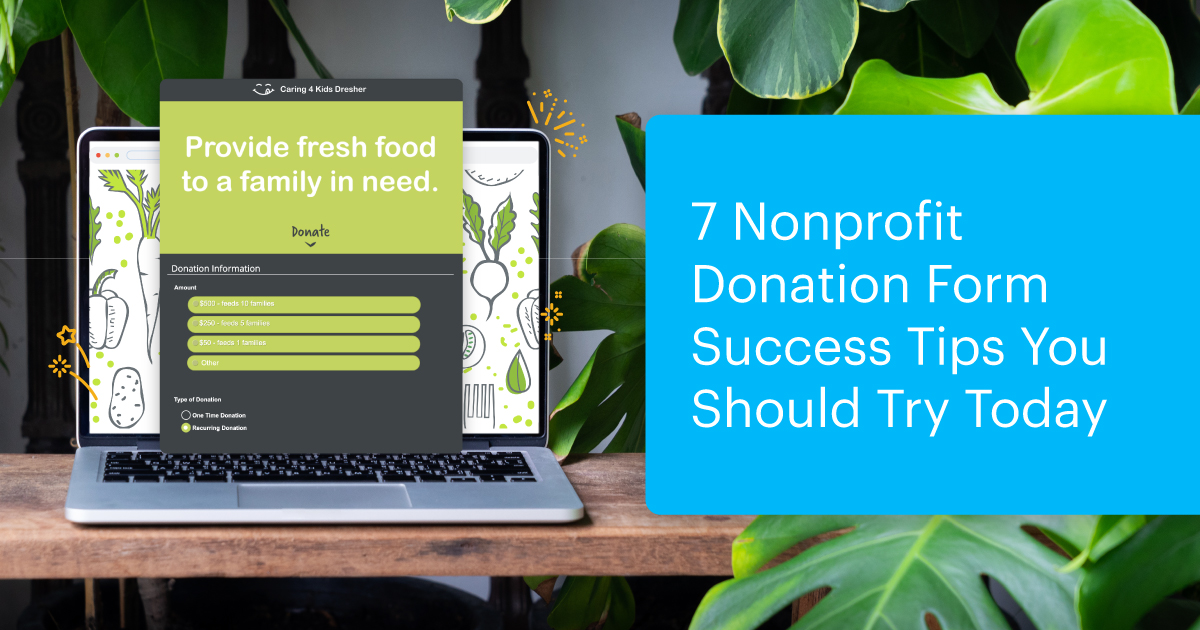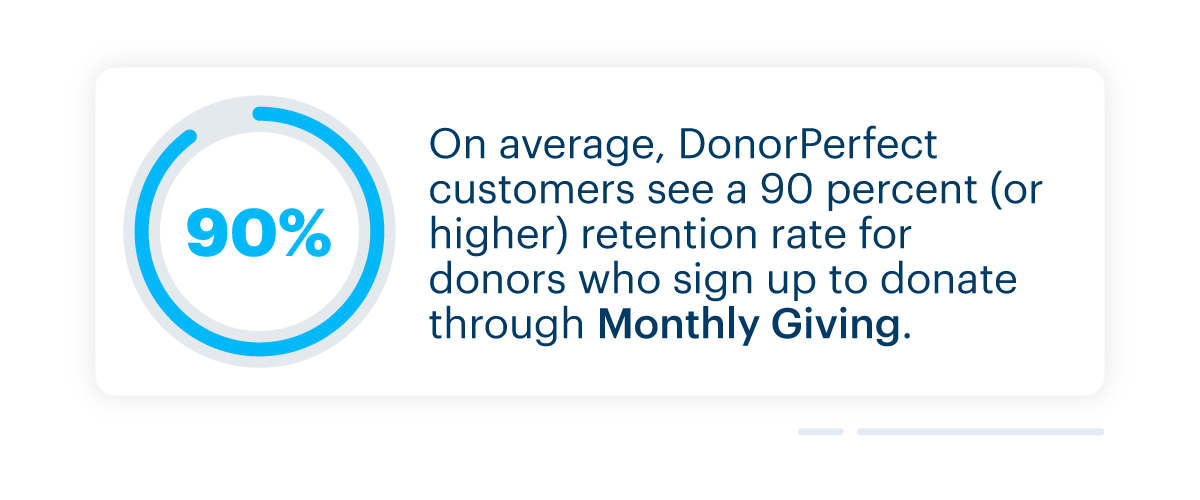
Today’s online fundraising blueprint was laid out long before the Coronavirus pandemic changed our lives. In fact, online giving has consistently grown across all industries over the past several years. However, there’s no doubt that the events of 2020 have shifted the focus of the digital donor community.
Let’s take a closer look at the trends surrounding online fundraising in 2021.
2021 Online Fundraising Trends
Leadership
More donors are going online for live updates on their causes and crowdsourced media, but in doing so, they want to know they can trust this information – and expect a higher level of thought leadership from the organizations they support. It’s never a bad idea to keep supporters informed on issues that directly relate to your cause, and show the impact you are making in your community.
Transparency
Younger generations are increasingly scrutinizing institutions and brands, asking for more transparency about the organizations they choose to support with their buying power. This makes it more important than ever to include digital elements – namely branding, photo, and video – when explaining the importance of your mission, or showcasing your impact.
Personalization
You’ve probably heard the first rule of fundraising, people give to people. Today’s donors expect their exchanges with nonprofits to be relational, rather than transactional. Personalized engagements (via email, text, or video messages) have become popular among both donors and organizations, as they are a win-win: deeper engagements lead to more loyal supporters.
What is an online donation form?
An online donation form is a digital tool used by organizations to collect donor data and process gift payments.
DonorPerfect Online Forms allows nonprofits to create an unlimited number of customized forms for all of their fundraising and donor engagement needs:
- One-time, automatic and monthly giving
- Event registration
- Volunteer sign-up
- Peer-to-peer (crowdfunding)
Online donation forms are incredibly convenient for donors
Many organizations beg the question: how do we reach younger generations without alienating older ones? What might surprise you is that online giving is preferred by all age groups – even compared to social media and text message fundraising. Bringing digital fundraising strategies to the forefront has become a no-brainer for today’s nonprofit organizations.
Your donation form raises money for you 24/7
Online donation forms essentially raise money for your organization while you sleep. These pages are available 24/7 through a link, your website, or social media, allowing donors to give whenever and wherever they want. They can even elect to give on a recurring basis, with their payments processed automatically.
Keep reading to learn the key features of an online fundraising strategy.
How to increase your donation form’s success
When used to their full potential, online donation forms reduce your fundraising costs, reach new donors and increase overall donations.
To see these results, it’s important to implement tools that will cut down on data entry time, and properly leverage the donor data you collect through your forms. Why? An increase in productivity means an increase in donor retention, as it makes time to get closer to your supporters.
Surefire tips to see results
Donation Form Tip #1:
Choose a payment processor that enters data for you
You might be wondering – once your forms are live, and your donors are giving – how can you make sure this valuable information is making it into your database? You want to choose a payment processor that allows you to store and synchronize donor data (i.e. gift amount, giving level, or giving history) for personalization opportunities.
Other must-have capabilities:
- Process debit, credit and electronic payments securely
- Add options for recurring, automatic, or monthly giving on your donation forms
- Invite donors to cover your processing costs as part of their donation
Donation Form Tip #2:
Brand and style your nonprofit donation form
To ensure supporters complete their transaction, it’s imperative that your donation forms uphold a level of professionalism that instills trust and ease. First, your fundraising goal should be clearly represented, and gift-giving should be convenient.
Second, people want to give to people, so give your forms a face. Add your logo and contact information to validate your organization, and use brand colors that match your website so supporters won’t feel apprehensive about entering their payment information.
Donation Form Tip #3:
Add your form to your website or email campaigns
It should be easy for your supporters to get involved. The two key places to put your form will be your nonprofit website and your solicitation emails.
On your website
Embed your form into a dedicated website page and share that page’s URL with your constituents. The URL should be easy to type in and remember.
Try adding a “Ways to Give” page to your website that lists all the ways that your donors can support your organization. Your form link should be at the top of the list since it is the best way for website visitors to donate online. You may also include Donate by Mail, Donate by Phone, Donate Monthly, and Corporate Matching Gifts.
In your email campaigns
Create a custom form link to share in your messages. Try sending an email solicitation with a link to your donation page, volunteer sign-up or event registration, so constituents can access the form straight away after reading about the cause. To make it even easier, pre-fill the donor’s information with an integration like DonorPerfect with SmartGive.
Both options are amazing ways to stand out and connect with supporters, but to effectively measure your success, it’s important that each form is dedicated to a specific ask.
Donation Form Tip #4:
Collect and organize your gift and donor data
It’s not just how constituents access your forms, it’s important to consider who is accessing them and when. To start, segment your contacts into meaningful lists (new donors, major donors, donors who haven’t given in a while, etc.) then engage in personal conversations using the data you collected through your forms (like name and gift amount).
DonorPerfect’s integrated forms can be customized to align with a certain campaign, appeal, or event, making it ideal to include them in targeted emails and social media posts, then see how well they resonate. You can even try sending a form to a group of connected donors (friends, colleagues, family members, etc.) inviting them to get involved together, increasing the likelihood of participation.
Donation Form Tip #5:
Report on your donation form’s performance
Reporting does so much more than help you manage your contacts – it lets you know what’s working and what’s not. You may have wondered, “Does every form visitor make a donation? Do most of them? How do we stack up to other nonprofits?”
On average, top-performing brands convert about 15 percent of their web traffic. Your conversion rate is a key metric that should be watched closely, as doing so ensures your message is reaching the right people and properly nurturing your new contacts.
When you use DonorPerfect Online Forms, you can track your form’s conversion rate and your campaign success through a user-friendly analytics dashboard in DonorPerfect.

That’s why we recommend organizations encourage repeat donations by setting it as the default option on their donation forms.
Donation Form Tip #6:
Share your donation form far and wide
Once you’re all set with creating and testing your online forms, it’s time to share – but where? A few places have been highlighted above – a “Ways to Give” page on your website, solicitation emails, and social media – but there are so many other amazing ways to get the word out and keep donations flowing into your database.
To name a few:
- Donation buttons
- Direct mail
- Text messages
- Fundraising materials
- Thank you and confirmation emails
- Crowdfunding
Check out DonorPerfect’s 25 Places to Share your Donation Form »
Let’s zero in on thank you and confirmation emails for a moment. Not only are they a great way to make memorable impressions and build donor relationships, they are also a great opportunity to share your message even further. For a multichannel approach to fundraising, try including a call to action on your donation form – follow us on social media, subscribe to our newsletter, or invite friends to match your donation.
Donation Form Tip #7:
Illustrate your supporters’ impact
Studies show that when you add impact statements to your form sharing, donations increase. This is because supporters are more likely to give when they know how their donations will be used. It’s important to include compelling images and stories on your donation forms that reinforce their decision to give.
DonorPerfect offers the following solutions to track impact:
- Automatically email donation updates when substantial contributions are received
- Automatically assign tasks to your team with due dates, prompting them to send a welcome package to new donors when they give for the first time, or join your monthly giving program
- Task your staff with acknowledging gifts when there are new gift records
Though it may seem daunting, don’t be afraid to bring in other digital elements. Videos have proven a very impactful method of demonstrating impact and expressing gratitude. For perspective, video is set to garner 82 percent of all online traffic in 2021, and 57 percent of people who watch a nonprofit video make a donation.
Just as we expect online giving to keep growing, your organization can, too. When you commit to a multichannel strategy and invest in digital fundraising tools, a greater impact can be achieved, and a stronger connection with supporters is inevitable.





